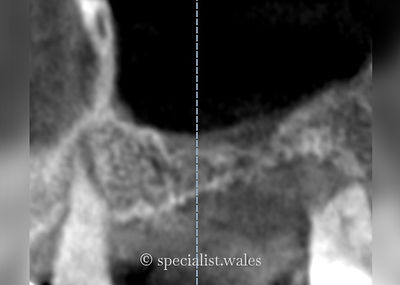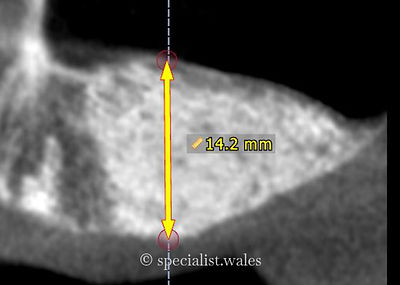
SINUS BONE GRAFTING IN CARDIFF
Sinus grafting to facilitate dental implant placements
Above your molar and premolar teeth in the upper jaw on both sides lies a cavity called the maxillary sinus, or maxillary antrum. If you loose a tooth below the maxillary sinus, once the bone has healed where the tooth used to be, sometimes there is no longer adequate height of bone in which to place a dental implant in to. The most predictable technique to generate extra bone height is to perform a sinus lift. This involves making a small window in the side of the sinus above where the tooth is to be replaced. The thin membrane that lines the sinus, called the Schneiderian membrane, is then elevated to create a pocket into which a combination of graft material (bovine xenograft) and some autogenous bone (bone from yourself collected from the local area are placed. The window that was made is then covered with a porcine collagen membrane and then the gum stitched back together. We then wait a period of 6 to 9 months for the bone graft to heal and mature into a solid block of bone into which implants can safely be placed. This surgery is usually performed by Mr Mallorie under local anaesthetic with the addition of intravenous sedation to help make the process as comfortable as possible for his patients. Sometimes we are able to place the dental implant(s) at the same time as performing the sinus surgery to help reduce the overall treatment time and the number of surgeries required.











